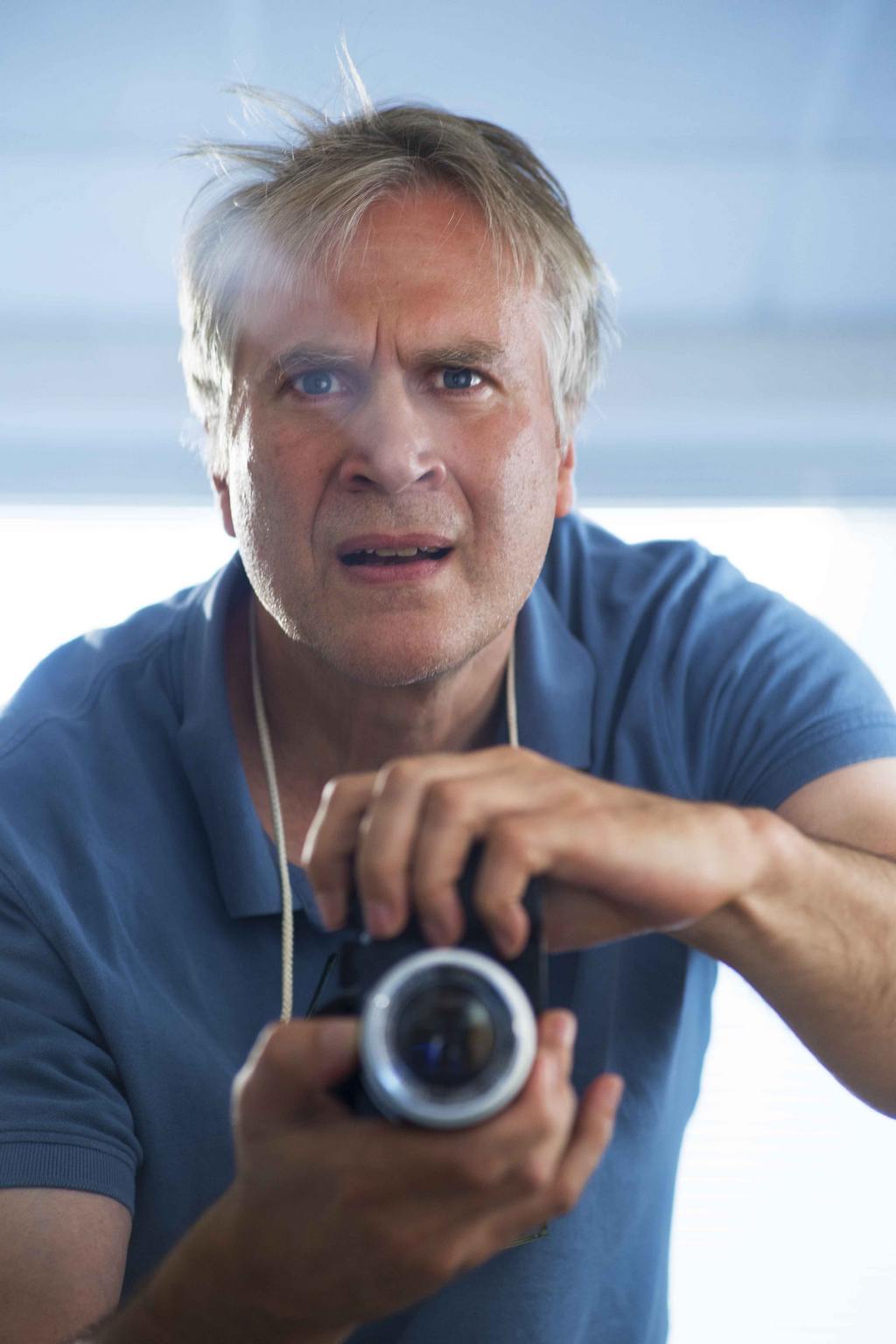-
Posts
957 -
Joined
-
Last visited
Reputation Activity
-
 maxotics got a reaction from Orangenz in Best value on camera microphone for usable scrap audio?
maxotics got a reaction from Orangenz in Best value on camera microphone for usable scrap audio?
I'm still in audio purgatory. My experience so far. Spending TIME experimenting/configuring a $25 Takstar mini-boom and $25 wired lav is better than MONEY spent on an expensive Rode NTG1. Environmental considerations FAR OUTWEIGH mic quality. For example, I set up my NTG1 in my office and was getting super audio. I then went to a friend's, similar sized room, but the audio came out horribly because my friend's room echoed a lot. (Yes, I listened on headphones but didn't hear it). I didn't have the experience/expertise to either get the mic closer or ditch it for a $25 lav.
Therefore, I'm going to make a counter-intuitive suggestion. DO NOT GET a good mic first. Get a Takstar and Lav (or similar) and experiment trying to get good audio with each, writing down your findings, etc. Learning environment and levels has done the best for me. AND AND AND, working with post audio processing. Premiere has some amazing tools now "Essential Audio" that gives one a good idea of what's possible.
Once you get all that sorted out, then shop for an expensive mic based on what you COULDN'T do with your cheap mics. That's what I'm doing now. The problem with an expensive mic is that unless you have all variations (boom, super cardoid, lav, wireless, etc.) you end up forcing whatever good mic you have into situations a cheaper solution would be better for. Again, I should have ditched the NTG1 for a cheap wired lav at my friend's place.
BTW, the difference between my Takstar and Rode is VERY slight. I can only hear it because I'm listening for it. NO NORMAL person would notice a difference if I switched mics during the video. The bigger difference is the unbalanced mic could be wired up longer and has less risk of interference.
Well, that's where I'm at!
-
 maxotics reacted to sanveer in iPhone X VS GH5
maxotics reacted to sanveer in iPhone X VS GH5
The iPhone WILL Do commercial (Bentley?) work because photographers and videographers are fallible and corruptible.
And Apple has in a new offshore in Jersey stashed hundreds of biliions of dollars from US tax authorities, which it is willing to pay judges, photographers and videographers, and various other individuals.
The V30 followed this when it had a face-off with a RED. Though the level of shamelessly is nowhere near the limit iPhone indulges in.
-
 maxotics got a reaction from sanveer in iPhone X VS GH5
maxotics got a reaction from sanveer in iPhone X VS GH5
I wanted to delete this (my) post. I wish the OP would tell us something we don't already know about current smartphones in general. Or say something like "iPhone X is Better than GH5" so we could try to run him out of town
What I'd say is the iPhone X shows that these phones will NEVER do commercial work. All improvements are mostly in computational photography, multi image synthesis, etc. They simply don't have the sensor size or horsepower to keep up with today's expectations.
Think about it, there still isn't RAW video on any consumer camera. I'm actually surprised.
The only reason to buy an iPhone X is to impress your friends. There, you can flame me now
-
 maxotics reacted to Mattias Burling in Magic Lantern for 80D coming soon?
maxotics reacted to Mattias Burling in Magic Lantern for 80D coming soon?
This I don't buy at all. The reason they haven't hacked for example the 1DC is because they don't know how. Without a firmware update file they don't know where to start.
I'm willing to bet that it is the same reason the 5Div isn't hacked. No one knows how.
-
 maxotics reacted to Deadcode in Magic Lantern for 80D coming soon?
maxotics reacted to Deadcode in Magic Lantern for 80D coming soon?
You just quoted a forum member who have 4 posts on the whole forum and cleary dont understand how the hacking process work. Yes there is a slow progress on hacking Digic 6 cameras like 5D Mark IV and 80D, but the guys constantly hitting in walls while trying to hack the newer (Digic6) canon cameras.
Probably they will do it, but not in the near future... and in about a year (i hope) we will have lot of 10 bit cameras with good codec which means RAW recording will no longer be as shiny as it was years ago..
-
 maxotics got a reaction from kidzrevil in HDR on Youtube - next big thing? Requirements?
maxotics got a reaction from kidzrevil in HDR on Youtube - next big thing? Requirements?
It's a taste thing, right, trading color saturation for greater dynamic range. We certainly wouldn't want HDR if it did that because people who favor saturation over DR would then be left with inferior images. We need both. When I say "saturation" (and maybe someone can give me a better term) I mean the amount of color information we need to discern all colors within the display gamut. Banding is the clearest example of what I mean. As I mentioned elsewhere, if you display, say 20 colors (saturation) of yellow on an 8-bit, 6DR gamut display, you will see banding, because your eye can tell the difference. Here are some examples I created.
The first is all 255 shades of green an 8bit image, which should render "bandless" on a 6DR screen
I can already see some banding, which tells me that the website might re-compresses images at a lower bit-depth.
Here's a version where 18% of the colors are removed, let's call it 7-bit
And now for 32% removed, call it 6-bit
The less colors (saturation information) there is, the more our eye/brains detect a difference in the scene. HOWEVER, what the above examples show is that we don't really need even 8bits to get good images out of our current display gamuts. Most people probably wouldn't notice the difference if we were standardized on 6bit video. But that's a whole other story
How does this relate to HDR? The more you shrink the gamut (more contrast-y) the less difference you see between the colors, right? In a very high contrast scene, a sky will just appear solid blue of one color. It's as we increase the gamut that we can see the gradations of blue. That is, there must always be enough bit-depth to fill the maximum gamut.
For HDR to work for me, and you it sounds like (I believe we have the same tastes), it needs the bit-depth to keep up with the expansion in gamut. So doing some quick stupid math (someone can fix I hope), let's say that for every stop of DR we need 42 shades of any given color (255/6 DR). That's what we have in 8bit currently, I believe. Therefore, every extra stop of DR will require 297 (255+42) shades in each color channel, or 297*297*297 = 26,198,073.
In 10bits, we can represent 1,024 shades, so roughly, 10-bit should give us another 24 stops of DR; that is, with 10bit, we should be able to show "bandless" color on a screen with 14 (even 20+) stops of DR.
What I think it comes down to is better video is not a matter of improved bit-depth (10bit), or CODECs, etc., it's a matter of display technology. I suspect that when one sees good HDR it's not the video tech that's giving a better image, it's just the display's ability to show deeper blacks, or more subtle DR. That's why I believe someone's comment about the GH5 being plenty good enough to make HDR makes sense (though I'd extend it to most cameras).
Anyway, I hope this articulates what I mean about color saturation. The other thing I must point out, that though I've argued that 10bit is suitable for HDR theoretically, I still believe one needs RAW source material to get a good image in non-studio environments.
And finally, to answer the OP. I don't believe you need any special equipment for future HDR content. You, don't even need a full 8bits to render watchable video today. My guess is that any 8bit video graded to an HDR gamut will look just fine to 95% of the public. They may be able to notice the improvement in DR even though they're losing color information because again, in video, we seldom look at gradient skies. For my tastes, however, I will probably complain because LOG will still look like crap to me, even in HDR, in many situations 10bit? Well, we'll just have to see!
-
 maxotics reacted to Vesku in HDR on Youtube - next big thing? Requirements?
maxotics reacted to Vesku in HDR on Youtube - next big thing? Requirements?
From Dolby test laboratory: https://blog.dolby.com/2013/12/tv-bright-enough/
"...At Dolby, we wanted to find out what the right amount of light was for a display like a television. So we built a super-expensive, super-powerful, liquid-cooled TV that could display incredibly bright images. We brought people in to see our super TV and asked them how bright they liked it.Here’s what we found: 90 percent of the viewers in our study preferred a TV that went as bright as 20,000 nits. (A nit is a measure of brightness. For reference, a 100-watt incandescent lightbulb puts out about 18,000 nits.)..."
On an average sunny day, the illumination of ambient daylight is approximately 30,000 nits. http://www.generaldigital.com/brightness-enhancements-for-displays
-
 maxotics got a reaction from Mat Mayer in HDR on Youtube - next big thing? Requirements?
maxotics got a reaction from Mat Mayer in HDR on Youtube - next big thing? Requirements?
It's a taste thing, right, trading color saturation for greater dynamic range. We certainly wouldn't want HDR if it did that because people who favor saturation over DR would then be left with inferior images. We need both. When I say "saturation" (and maybe someone can give me a better term) I mean the amount of color information we need to discern all colors within the display gamut. Banding is the clearest example of what I mean. As I mentioned elsewhere, if you display, say 20 colors (saturation) of yellow on an 8-bit, 6DR gamut display, you will see banding, because your eye can tell the difference. Here are some examples I created.
The first is all 255 shades of green an 8bit image, which should render "bandless" on a 6DR screen
I can already see some banding, which tells me that the website might re-compresses images at a lower bit-depth.
Here's a version where 18% of the colors are removed, let's call it 7-bit
And now for 32% removed, call it 6-bit
The less colors (saturation information) there is, the more our eye/brains detect a difference in the scene. HOWEVER, what the above examples show is that we don't really need even 8bits to get good images out of our current display gamuts. Most people probably wouldn't notice the difference if we were standardized on 6bit video. But that's a whole other story
How does this relate to HDR? The more you shrink the gamut (more contrast-y) the less difference you see between the colors, right? In a very high contrast scene, a sky will just appear solid blue of one color. It's as we increase the gamut that we can see the gradations of blue. That is, there must always be enough bit-depth to fill the maximum gamut.
For HDR to work for me, and you it sounds like (I believe we have the same tastes), it needs the bit-depth to keep up with the expansion in gamut. So doing some quick stupid math (someone can fix I hope), let's say that for every stop of DR we need 42 shades of any given color (255/6 DR). That's what we have in 8bit currently, I believe. Therefore, every extra stop of DR will require 297 (255+42) shades in each color channel, or 297*297*297 = 26,198,073.
In 10bits, we can represent 1,024 shades, so roughly, 10-bit should give us another 24 stops of DR; that is, with 10bit, we should be able to show "bandless" color on a screen with 14 (even 20+) stops of DR.
What I think it comes down to is better video is not a matter of improved bit-depth (10bit), or CODECs, etc., it's a matter of display technology. I suspect that when one sees good HDR it's not the video tech that's giving a better image, it's just the display's ability to show deeper blacks, or more subtle DR. That's why I believe someone's comment about the GH5 being plenty good enough to make HDR makes sense (though I'd extend it to most cameras).
Anyway, I hope this articulates what I mean about color saturation. The other thing I must point out, that though I've argued that 10bit is suitable for HDR theoretically, I still believe one needs RAW source material to get a good image in non-studio environments.
And finally, to answer the OP. I don't believe you need any special equipment for future HDR content. You, don't even need a full 8bits to render watchable video today. My guess is that any 8bit video graded to an HDR gamut will look just fine to 95% of the public. They may be able to notice the improvement in DR even though they're losing color information because again, in video, we seldom look at gradient skies. For my tastes, however, I will probably complain because LOG will still look like crap to me, even in HDR, in many situations 10bit? Well, we'll just have to see!
-
 maxotics reacted to Mattias Burling in The Canon C200 is here and its a bomb!
maxotics reacted to Mattias Burling in The Canon C200 is here and its a bomb!
The imo best Youtube channel about filmmaking there ever was just unboxed a c200. Im happy for John.
-
 maxotics reacted to Axel in HDR on Youtube - next big thing? Requirements?
maxotics reacted to Axel in HDR on Youtube - next big thing? Requirements?
@markr041
I personally thank you for pioneering. I can't monitor HDR right now, but it's good to know about the intricacies beforehand. You took the effort and tested it, that's awesome!
@maxotics
Very interesting read. I absorp every word and read your posts several times in order not to miss something.
@jonpais
You always find the right words and explain very well. What I like most about your postings are your excellent videos that show your good taste and commitment to beauty.
I am glad I started this thread. Invaluable information, great forum. Thumbs up for all.
-
 maxotics reacted to Vesku in HDR on Youtube - next big thing? Requirements?
maxotics reacted to Vesku in HDR on Youtube - next big thing? Requirements?
Yes I have found the same thing. HDR demos in stores shows often normal contrast scenes adjusted very contrasty and colorful. The result is over saturated and eye watering unnatural images. When I go outside I dont see over saturated world. The normal world is actually quite dull and boring color wise. A good HDR system should show high contrast and high color only if the subject has it. Just like a good audio system is not making too much bass or too load sound all the time (Action movies does ) .
It is a difficult question. If the HDR system works right the image should look majority of time normal. Only the high contrast/high color scenes will look different. But it is difficult to sell a new expensive system which looks the same as old majority of time. Film makers must find shocking colors and sunsets to make HDR shine but in normal life there are not so many shining moments.
-
 maxotics reacted to Don Kotlos in Nikon D850 vs everything
maxotics reacted to Don Kotlos in Nikon D850 vs everything
Anything can be quantified, all it comes down to is a common definition.
Sharpness = Acutance + Resolution
http://www.cambridgeincolour.com/tutorials/sharpness.htm
-
 maxotics got a reaction from ssrdd in Nikon D850 vs everything
maxotics got a reaction from ssrdd in Nikon D850 vs everything
My personal feeling is sharpness is objective
-
 maxotics reacted to jax_rox in C300 vs F3
maxotics reacted to jax_rox in C300 vs F3
F3 is great, and I don't love the C300 but it's very serviceable. You'll likely be happy with either.
I'm considering selling my F3 because I just don't use it all that much. I find the jobs that are big enough warrant Alexa's and the smaller jobs are perfectly serviceable by ny A7sII which isn't quite as nice as the F3 but has 4K, is light, small and nimble and for the kinds of jobs I'd do with it, the picture is more than good enough.
There's three drawbacks I find using the F3 in 2017:
-being forced to use a recorder to make the image quality worth the investment can be frustrating at times. Needing to rig it out every time gets annoying if you're on a job by yourself. It's also kinda big and unwieldy, though it sits okay on your shoulder
-the menu system is one of Sony's worst ever. This in itself makes me reluctant to pull out the F3 sometimes
-you can't record any higher than HD resolution. For me, this will likely be a big thing that kills it as an option for many jobs going forward.
If you don't mind those things, you can get a really great picture out of it. Go for it, you'll be happy. I'm always happy with what I get out of it, I just find I use it less and less these days.
-
 maxotics reacted to HockeyFan12 in C300 vs F3
maxotics reacted to HockeyFan12 in C300 vs F3
In my experience the difference is very small between the two, with Canon having better looking colors (just slightly, the F3 beats the F5's SLOG2 for sure) and the F3 having about a half stop more highlight detail. The C300's codec falls apart in high contrast scenes with a lot of foliage. The F3's codec is only suitable for rec709. Both are great in low light. The Canon is sharper, but also noisier in the shadows. Just slightly on both.
Both are close enough to each other but far enough from the Alexa (which is worse in low light, to be fair), that I'd just take a C100 Mk II any day for the ergonomics. But if a big camera is okay for you, the F3 rig offers 60p and a slightly higher quality image technically. It would not be my choice, but I still recommend it to others.
I disagree about DPX files being functionally any different from video files, but that's a digression. The difference between uncompressed DPX and 444XQ or even 444, in my experience, is completely invisible, and I get irritated when clients demand DPX.
I can send some footage I shot with both if you're interested, but can't post it publicly.
Both great cameras at great prices. You can't go wrong!
-
 maxotics reacted to EthanAlexander in GH5 all-i 400Mbs vs ipb 150Mbs frames comparison:
maxotics reacted to EthanAlexander in GH5 all-i 400Mbs vs ipb 150Mbs frames comparison:
On top of all this, if IPB really were a "motion cadence killer," then everyone would be complaining about watching movies at home, because whether it's Blu Ray or iTunes or Netflix, we NEVER get to see big budget films without interframe compression. And I can't prove it, but I'd be willing to put money on the files being distributed to movie theaters with digital projection having interframe compression, as well. There's no way they're sending out 300+GB files!
-
 maxotics reacted to fuzzynormal in Gear list
maxotics reacted to fuzzynormal in Gear list
Yeah. It's easy to zoom in, set focus, then pull back to your shot.
Takes less than a second.
-
 maxotics reacted to cpc in The correct way to expose for SLOG3 when using 8bit cameras
maxotics reacted to cpc in The correct way to expose for SLOG3 when using 8bit cameras
Banding is a combination of bitdepth precision, chroma subsampling, compression and stretching the image in post. S-log3 is so flat (and doesn't even use the full 8-bit precision) that pretty much all grades qualify as aggressive tonal changes. S-log2 is a bit better, but still needs more exposure than nominal in most cases.
Actually, I can't think of any non-Arri cameras that don't need some amount of overexposure in log even at higher bitdepths. These curves are ISO rated for maximizing a technical notion of SNR which doesn't always (if ever) coincide with what we consider a clean image after tone mapping for display. That said, ETTR isn't usually the best way to expose log (or any curve): too much normalizing work in post on shot by shot basis. Better to re-rate the camera slower and expose consistently.
In the case of Sony A series it is probably best to just shoot one of the Cine curves. They have decent latitude without entirely butchering mids density. Perhaps the only practical exception is shooting 4k and delivering 1080p, which restores a bit of density after the downscale.
-
 maxotics got a reaction from EthanAlexander in The correct way to expose for SLOG3 when using 8bit cameras
maxotics got a reaction from EthanAlexander in The correct way to expose for SLOG3 when using 8bit cameras
You're going to get a standing ovation from me for sure Being of that age, yes, I'm very familiar with rating film slower and developing long/shorter, etc. However, even in film, you make a trade-off. Shooting the grand canyon is different than shooting a portrait. One pushes or pull films based on what they're shooting. They aren't doing something smarter than the manufacturer who wants to optimize their product for most shooting conditions. LOG can give you benefits in challenging lighting. Never disputing that.
-
 maxotics got a reaction from mercer in The correct way to expose for SLOG3 when using 8bit cameras
maxotics got a reaction from mercer in The correct way to expose for SLOG3 when using 8bit cameras
Agree, beautiful look!
-
 maxotics got a reaction from mercer in The correct way to expose for SLOG3 when using 8bit cameras
maxotics got a reaction from mercer in The correct way to expose for SLOG3 when using 8bit cameras
Thanks for the kind words! I'm super happy to hear I've helped anyone get into Magic Lantern RAW. I currently have a 7D with ML RAW and agree, compared to those day, wow, not difficult anymore. You're right, I'm not caught up to Nikon. One day! I have a a6300 and see what you see. A monster camera, image IQ wise. It's the ease of use thing that stops me from fully embracing them as video cameras. I bought a used C100 and it gets me exactly the image I want right out of the camera at a reasonable file size. I'm now as passionate about Canon's Cinema line as I was about RAW those years ago Anyway, will try what you suggest with my A6300 the next time I shoot with it!!! Thanks for the tip!
-
 maxotics reacted to mercer in The correct way to expose for SLOG3 when using 8bit cameras
maxotics reacted to mercer in The correct way to expose for SLOG3 when using 8bit cameras
Max, I learned so much from your eos-m raw videos and posts that it eventually led me down the ML path to a 50D and then finally a 5D3. The workflow is pretty simple now... and if you are used to converting footage before bringing it into your NLE, it is basically the same amount of time. If you use MLVFs it’s even faster. The 5D3 and Canon lenses with IS are as steady as some variants of IBIS. By utilizing the Raw histograms with ETTR Hint, it truly becomes a point and shoot cinema camera.
Otherwise what Nikon has done with Video DR and their Flat Profile is nothing short of amazing, @Mattias Burling ‘s D750 tests almost look like Raw video to me. I also noticed the a6500 has a Raw like texture when shooting in sLog3 with the cinegamut.
So IMO, if you want the Raw look with out shooting Raw, then try out a D5500 or D750 or if you want to try your hand at Log again, I think you may be surprised by the a6500 and sLog3 with cine gamut 3.
But from reading your posts all of these years, I doubt I revealed anything to you that you didn’t already know.
Duh, I forgot to write that with Auto ISO and manual lenses on the a6500, you can set +/- exposure compensation... so to correct my post... I would set the exposure compensation at +1.7 and then use a variable ND to ride the exposure when the Auto ISO couldn’t adjust higher/lower than the base ISO/my desired maximum ISO... respectively.
-
 maxotics got a reaction from mercer in The correct way to expose for SLOG3 when using 8bit cameras
maxotics got a reaction from mercer in The correct way to expose for SLOG3 when using 8bit cameras
Yeah, and I just want to say, I love what you're doing artistically too! But...
I think I understand. I get bent out of shape because there's a fair amount of snake-oil sold out there in the way of color profiles, etc (which I know you're not doing) which actually hurts the footage that new filmmakers take. This is a very interesting subject to me because, like you, I LUST after a low-contrast look. Nothing beats a RAW workflow in my book. It's just beautiful. But I'm lazy, like everyone else, and want a short-cut. So I've tried, like you, to make LOG work. But I couldn't for most situations. After some experimentations I figured out why it is impossible. But in the back of my mind, I'm still hopeful. So when I read your post I'm like, maybe he's done it! But I need to see certain things addressed to be convinced. So, all good. I'm enjoying this!
-
 maxotics got a reaction from kidzrevil in The correct way to expose for SLOG3 when using 8bit cameras
maxotics got a reaction from kidzrevil in The correct way to expose for SLOG3 when using 8bit cameras
Yeah, and I just want to say, I love what you're doing artistically too! But...
I think I understand. I get bent out of shape because there's a fair amount of snake-oil sold out there in the way of color profiles, etc (which I know you're not doing) which actually hurts the footage that new filmmakers take. This is a very interesting subject to me because, like you, I LUST after a low-contrast look. Nothing beats a RAW workflow in my book. It's just beautiful. But I'm lazy, like everyone else, and want a short-cut. So I've tried, like you, to make LOG work. But I couldn't for most situations. After some experimentations I figured out why it is impossible. But in the back of my mind, I'm still hopeful. So when I read your post I'm like, maybe he's done it! But I need to see certain things addressed to be convinced. So, all good. I'm enjoying this!
-
 maxotics got a reaction from kidzrevil in The correct way to expose for SLOG3 when using 8bit cameras
maxotics got a reaction from kidzrevil in The correct way to expose for SLOG3 when using 8bit cameras
You're going to get a standing ovation from me for sure Being of that age, yes, I'm very familiar with rating film slower and developing long/shorter, etc. However, even in film, you make a trade-off. Shooting the grand canyon is different than shooting a portrait. One pushes or pull films based on what they're shooting. They aren't doing something smarter than the manufacturer who wants to optimize their product for most shooting conditions. LOG can give you benefits in challenging lighting. Never disputing that.







